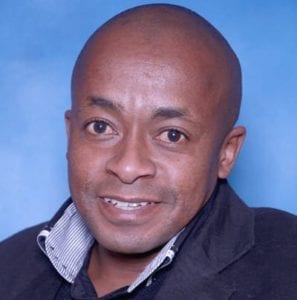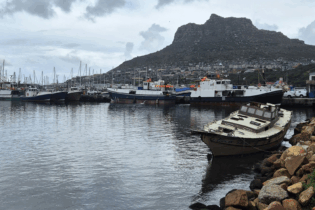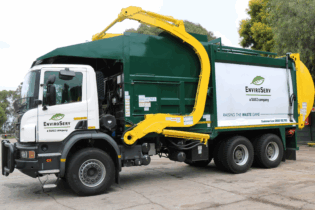In 2013, ERWAT established its commercial business division as a distinct department in order to leverage its success and expertise as a service provider to other municipalities and industry.
ERWAT is an established water care municipal business entity providing bulk wastewater treatment within its service area. In so doing, the entity has developed competencies that are required for its core business, but which also have value in terms of leveraging wastewater treatment and management to the ultimate good of water quality in the country. The company has decided to offer and deliver these premier specialised water-related services and efficient solutions, which improve wastewater handling and enhance the quality of water sources in South Africa, to other entities and industry as a whole. This involves the deployment of skills and competencies to improve the overall handling and treatment of wastewater. Offering distinct services, including wastewater management, technical services, laboratory services and training, compliance monitoring, asset management, testing and upgrading of plants, ERWAT’s commercial business division currently has more than a thousand clients, comprising government departments, local authorities, industries and parastatels. It is working as business partner to industry, ensuring effluent and wastewater is properly managed in both an environmentally and commercially sound manner. IMIESA talks to Mikgane Tsotetsi, executive manager of ERWAT’s Commercial Business Division. What is the scope of the Commercial Business?MT The Commercial Business unit looks at the entire external business. This includes lab analysis, assessments, audit reports, operational and technical assistance, and problem solving. What are your guidelines in working with municipalities?
Our approach is very simple. We take the Blue Drop and Green Drop reports and, from these, develop our metrics for compliance. We identify municipalities that are struggling to comply and are in need of assistance, contact the relevant manager or director and develop an initial assessment report. The Blue Drop and Green Drop reports provide a meta-view of the municipalities’ performance, but don’t typically provide the details behind their findings. They highlight the more obvious shortcomings, such as maintenance problems or problems with services, and from there we go into more granular detail, identifying all the factors that have led to a situation of non-compliance. Our intention when presenting this assessment is to offer our services. We have the capacity and know-how to address issues across all elements of compliance. The criteria themselves are fairly complex and include short-comings with regard to personnel, equipment and maintenance schedules, quality testing, training, asset management and systems. A recent skills audit into local government water services paints an alarming picture. What is ERWAT seeing?
There are several such studies and, in my opinion, they miss the real picture. In many instances, the personnel are present and are performing certain functions, but are not accounted for as they aren’t graded. The same is true of maintenance; it is being done, but on an ad hoc basis and not as part of a comprehensive asset management programme and also goes unreported. If the maintenance is scheduled, it is essential to have the capacity in the municipality to implement it. Much of the time, the formal skills are not there. The whole point of scheduled maintenance is to prolong the life span of equipment and ultimately run a more efficient operation, so the situation for some municipalities is far from ideal. How does ERWAT operate in terms of maintenance plans for clients?
It is a very logical procedure. As mentioned before, we develop our criteria directly from the Blue Drop and Green Drop reports, diagnose the challenges and then make very specific recommendations across the entire operation, from grading of personnel to developing scheduled maintenance plans, all the way through management issues. We have observed situations in which a plant has 20 personnel, none of whom are graded. We then make recommendations directly to the Department of Water Affairs for the grading of personnel and then report on that with regard to compliance. After an audit, we then cost the remedies. Some costs are fairly straightforward to quantify, like monitoring. It’s a very straightforward process that just needs to be done. We can establish the correct protocols and frequencies in a monitoring plan, and water samples can then be tested at ERWAT’s laboratory. If there are maintenance issues, we bring the technical team along, who will then draw up a maintenance plan. Does ERWAT offer IT solutions in support of asset management?
Of course. Asset maintenance software is a component of the overall plan. WISA has actually developed software for water utility asset management.
What about training?
Indeed we offer training. Training forms part of the proposal. As long as it is the same software that is being implemented by ERWAT, we send a technician around to the client to implement and provide training to available staff.
We distinguish between compliance analysis and operational analysis. For operational matters, we can conduct it in-house. In the case of testing, we can train client’s staff to take samples, understand the kind of equipment to use and how to store and submit the samples. Theycan even learn to perform fairly complex tests and interpret results. Troubleshooting to find the source of problems is also something we train clients to do. Again, once the training is done and we have confidence in the competency level, we hand over the facility to the relevant authority or industry. For compliance testing, ERWAT makes use of our SANAS 17025 accredited laboratory facilities. To determine the level of service we can provide, we analyse the context in which the plant operates by determining the current performance (status quo) of the plant. We do this by determining the boundaries of the supply area, current and projected population figures, current flows and specific characteristics of the plant and the supply area. When we get into the plant, these are the points we focus on. We can very accurately develop a long-term view of plant by assessing flows, plant capacity and population projections. We obtain the population information from various sources. What is a reasonable period needed to determine if a plant needs to be extended?
We look at the current population figures and project what it will look like over a certain period of time, as per standard population growth. If a plant is still running below design capacity, we can fairly accurately determine when in the future the plant would need to be expanded. We obtain detailed information about current delivery backlogs and how many housing units still require potable water and sanitation infrastructure. Comparing this data to the municipality’s Integrated Development Plan (IDP) tells us what to expect in terms of eradicating the backlog and how long it will take. We can then assess what the impact will be on the treatment plant and create a feasible plan for it to be able to meet the projections of the IDP. We can then ensure that capacity keeps up with demand, which is critical for social and economic development. How far does ERWAT’s services extend?
In a nutshell, we group our services into operations, technical and compliance issues in one bundle, and monitoring, maintenance and refurbishment in another bundle. We also assist municipalities in better leveraging their services by compiling and implementing by-laws governing industrial operations within the wastewater system. These typically determine the type and volumes of waste discharged by industry. The municipal treatment plant has optimal operating volumes, processing specific types of industrial. We then take samples and apply a formula that accounts for the capacities of the treatment plant and set optimal thresholds. Industries that overshoot these thresholds then incur penalty rates. By applying this ‘Polluter Pays’ principle, the municipality\ ensures that funding for plant upgrades and additional maintenance incurred by running volumes is available. Which brings us to ERWAT’s industrial offerings… When implementing a functional Polluter Pays system, the scenario for industry changes. Naturally, they are motivated to avoid penalt charges. It is at this stage that we become a business partner to industry. We help industry comply with by-laws and provide certification when they do achieve compliance. These can be used in their annual reports and marketing, showing them to be responsible corporate citizens. The relationship between implementing the by-laws that establish a Polluter Pays principle and assisting industry to comply with them creates a natural cycle of responsible use of resources. What is ERWAT Commercial Business’s geographic reach?
ERWAT is located in Gauteng’s East Rand, and there is a lot of industry that comprises our primary customer base, linked to the most effective treatment plant, which is a major benefit. But we work throughout the country and try to engage as many municipalities as we can. As the department was formed, the laboratories and the industrial services were already in place. We recognised the need for services like this for the municipal market. How does ERWAT ensure that it attracts the necessary skills?
We currently have just over 40 students engaged in-service training. These students have studied water care and chemical engineering, and after completing their studies, we employ them if the need is there. We can be geographically sensitive as well, retaining staff who come from the areas where we have contracts, which is ideal. There are real job creation opportunities in this sector and we have trained 60 qualified professionals over the past 12 months. The model we have deployed is actually unlocking jobs.








